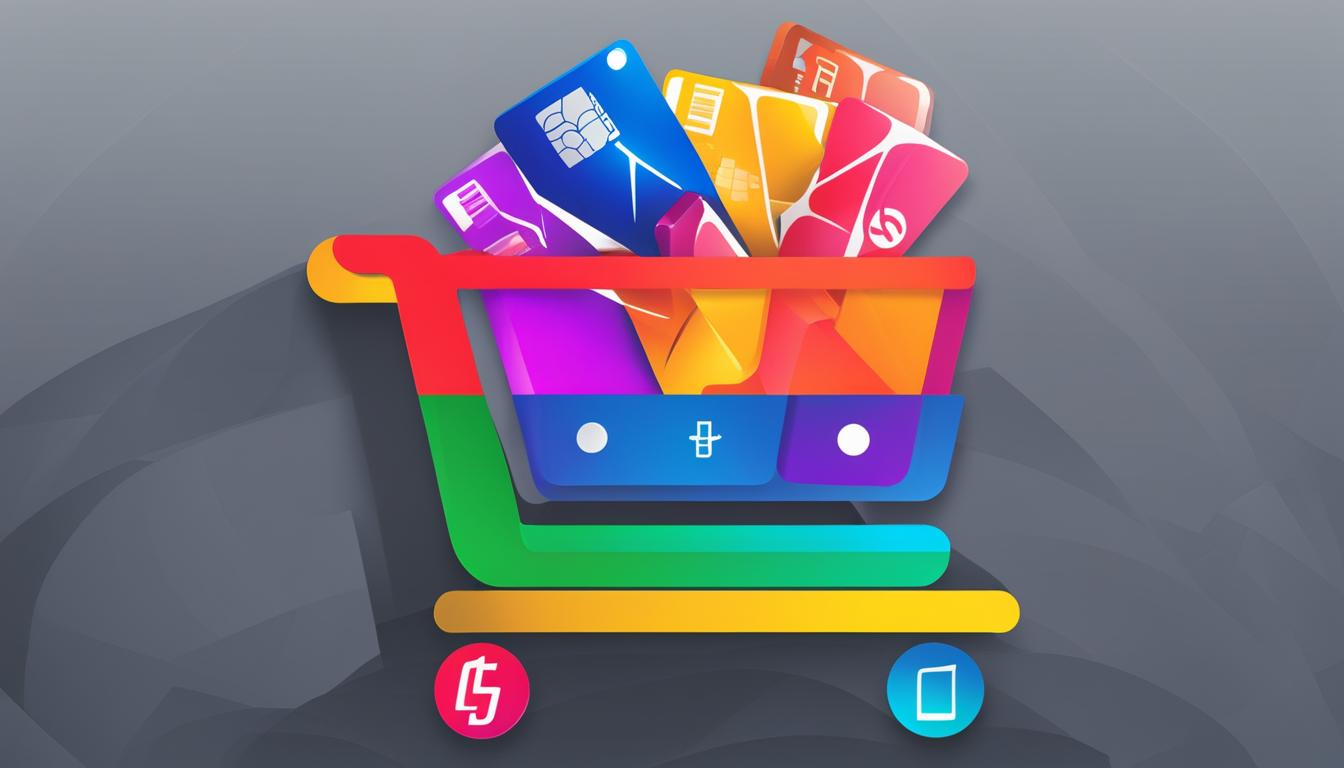If you’re delving into the realm of online transactions and seeking methods to expand the capabilities of your business, you might be wondering, “what is a virtual terminal?” It’s an essential tool that reshapes the traditional payment landscape, catering to the needs of today’s digital enterprises. A virtual terminal for businesses enables you to process payments electronically. This bypasses the constraints of a physical Point of Sale system. Through the convenience of internet-enabled devices like smartphones or laptops, you have the power to accept payments anywhere at any time—a game-changer for companies looking to broaden their payment avenues.
Imagine being able to complete a transaction over the phone with a client who’s miles away or finalize a sale through an email correspondence. That’s the prowess of utilizing a virtual terminal for online payments. Despite the lack of tangible hardware, this system ensures your business is never out of reach from those crucial sales opportunities. Equipped with this software, you’re preparing your business to meet modern demands where convenience and efficiency are paramount. Ready to embrace the sophisticated simplicity a virtual terminal provides? Let’s dive in and learn how it can revolutionize the way you operate.
Exploring the Basics of Virtual Terminals
Understanding how a virtual terminal functions is critical for businesses that wish to embrace the breadth of digital commerce. It serves multiple roles, from facilitating card-not-present transactions to ensuring customers can pay with ease, even when they’re oceans away. Let’s delve into what defines a virtual terminal and it marks a significant shift from the physical terminals we were once tethered to.
Defining the Virtual Terminal
A virtual terminal is essentially your all-in-one payment solution, characterized by versatility and simplicity. At its core, the virtual terminal definition encompasses any web-enabled system that allows for the input of payment details without the need for physical hardware. An array of virtual terminal features includes accepting credit card information over the phone, processing e-checks (ACH), or manually entering customer data received via email. Catering to this flexibility, the virtual terminal usage extends from small businesses to large-scale operations.
The Evolution from Physical to Virtual Systems
The transition from physical terminals to virtual systems represents a pivotal development in payment processing technology. To comprehend the virtual terminal vs physical terminal debate, consider the adaptations demanded by an increasingly internet-dependent society. Unfettered by physical constraints, virtual terminals bring the transactional experience to wherever your business requires it, promoting an ‘office-less’ business model, which is inherently more adaptable to the dynamic pace of modern commerce.
Businesses were once confined to sales in a brick-and-mortar setting, limited by their POS systems. The innovation of virtual terminals has since unlocked new realms of convenience and service delivery. No longer does a customer need to visit a store or hand over a card; payment details can be shared over a secure line, inputted into a user-friendly interface, and processed in a matter of moments, while adhering to stringent security standards.
- Remote Transactions: Handle sales calls or invoice payments without anyone having to physically swap a card or tap a terminal.
- Speed and Efficiency: Skip the hardware set-up; all you need is an internet connection and authorized access to your processor’s portal.
- Access Anywhere: Whether at a trade show, on a field service call, or sitting at your desk, payments are just a few clicks away.
- Enhanced Customer Service: Provide immediate payment options for services rendered or goods delivered, regardless of location or time.
Understanding the Functionality and Advantages of Virtual Terminals in Today’s Business
At the heart of today’s commerce lies a powerful tool that has reshaped how transactions are processed—the virtual terminal. This technological innovation serves as a testament to how far payment solutions have evolved, offering a plethora of benefits for modern enterprises. When delving into how does a virtual terminal work, it’s clear that these systems are designed with both simplicity and security in mind, enabling businesses to input transaction details via an online interface, which then communicates with payment processors to approve the charges.
Virtual terminals are a perfect fit for the dynamic nature of present-day business operations, featuring prominently in scenarios where traditional point-of-sale systems aren’t viable or necessary. Their versatility extends to supporting multiple payment methods, such as credit cards, debit cards, and ACH transfers, making them indispensable for businesses seeking virtual terminal benefits like flexibility and convenience.
For modern enterprises, integrating a virtual terminal means embracing a solution that doesn’t tether sales to a physical storefront. Freelancers, consultants, and service providers who typically operate without a storefront can now accept payments as efficiently as their retail counterparts. Similarly, traditional businesses can effortlessly execute transactions across different locations, further expanding their market reach and bolstering their sales pipeline.
| Feature | Benefit | Application in Business |
|---|---|---|
| Multi-Payment Method Support | Flexibility in payment options | Client convenience increases with the ability to choose preferred payment methods. |
| Remote Transaction Processing | Expanded sales reach | Facilitates business beyond geographical boundaries and traditional business hours. |
| Real-Time Payment Processing | Rapid transaction completion | Enhances cash flow by allowing immediate payment confirmation and processing. |
| Secure Online Interface | Protection of sensitive data | Builds customer trust through adherence to PCI-DSS compliance and robust security measures. |
As the above table illustrates, the advantages of employing a virtual terminal span from the intricacies of transaction processing to building a trustworthy brand image. When implemented strategically, virtual terminals align with the objectives of modern enterprises, accentuating their ability to operate both efficiently and securely in the digital economy. Thus, understanding and leveraging these benefits is critical for businesses. They help them maintain a competitive edge and capitalize on the shifts in consumer payment preferences.
Benefits and Security Considerations of Using a Virtual Terminal
Embracing the use of a virtual terminal can considerably increase the agility of your business. With the ability to conduct transactions from any location, you can capture new sales opportunities and cater to customer preferences for non-traditional payment methods. However, with these virtual terminal benefits come significant responsibilities, specifically regarding payment processing security concerns. Let’s delve into how virtual terminals can be both a boon for your business flexibility and a point of focus for security.
How Virtual Terminals Enhance Business Flexibility
Virtual terminals have revolutionized the way businesses approach sales transactions. Convenience is paramount; whether your clients are across the street or across the globe, they can complete purchases effortlessly. The scalability that virtual terminals provide cannot be overstated—they allow companies to quickly adapt to market demands and customer needs without the constraints of physical locations. Below are key benefits that outline the flexibility offered by virtual terminals.
- Location Independence – Process payments from anywhere, whether you are at a trade show, visiting a client offsite, or working remotely.
- Improved Customer Service – Offer immediate transaction processing, which can enhance the customer experience and foster loyalty.
- Diverse Payment Options – Accept a variety of payment methods including credit cards, debit cards, and ACH payments, catering to different customer preferences.
- Seamless Integration – Virtual terminals tend to integrate easily with other business systems like accounting software and customer relationship management tools.
Navigating the Security Implications of Payment Processing
While the advantages of using a virtual terminal are clear, it’s imperative to address payment processing security concerns. The safeguarding of sensitive financial information is a top priority, especially when handling card-not-present transactions that are susceptible to fraud. Businesses must implement and maintain robust security measures to comply with regulatory standards like PCI-DSS. The following table depicts crucial security practices that should be considered when using a virtual terminal.
| Security Measure | Description | Benefit |
|---|---|---|
| Encryption | Protects data as it’s transmitted over the internet | Prevents unauthorized access during transaction processing |
| Tokenization | Replaces sensitive data with unique identification symbols | Keeps actual card details hidden during and after the transaction |
| Fraud Detection Tools | Monitors for suspicious activities and flags anomalies | Reduces the risk of fraudulent charges and associated costs |
| User Access Controls | Limits system access to authorized personnel only | Minimizes internal threats and data breaches |
In conclusion, the decision to implement a virtual terminal into your business model offers valuable flexibility while also necessitating a proactive stance on virtual terminal security. As you reap the benefits of broadened sales capabilities, ensuring that your customers’ payment information remains secure must be at the forefront of your operational strategy.
Conclusion
In the current business landscape, versatility and efficiency are paramount. The virtual terminal has stepped up as an essential solution. By definition, a virtual terminal is an online payment method that enables merchants to manually input and process transactions without the customer being present—an invaluable feature for varied business models. Its role in facilitating virtual terminal for online payments cannot be overstated as it meets the growing demand for remote transaction capabilities.
With the merits of convenience and adaptability, virtual terminals are integrated into the fabric of businesses seeking to expand their transactional footprint beyond the constraints of physical locations. However, amidst the benefits lies the critical responsibility of virtual terminal security. This means that your commitment to protecting customer data must evolve as part of adopting this technology. Implementing stringent security measures not just checks the compliance boxes but also preserves the integrity of your transactions and the trust of your clientele.
In closing, as you navigate the digital marketplace, understanding the virtual terminal definition and its potential for facilitating seamless transactions will serve as a guide to leveraging its advantages. While the allure of operational flexibility is attractive, it is balanced by the dedication required to establish solid security protocols. By doing so, you are positioning your business to thrive and grow, reinforcing trust with every transaction in a world that values security as much as convenience.








This Post Has 0 Comments